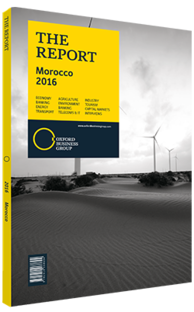New clusters aim to reinvigorate pharmaceuticals in Morocco's health industry
Uncertainty has reigned over the pharmaceutical industry in the past couple of years after the government instituted a policy in 2013 reducing the cost of wide range of pharmaceutical goods. First initiated in December 2013, the move aims at boosting access to medicine as well as domestic consumption, which has traditionally been limited by high costs as a proportion of average spending capacities. Annual per capita health spending currently stands at around Dh400 (€36.68) in Morocco, compared to €61 in Algeria and €98 globally. As of June 2015, the price of more than 2000 drugs in the country had been reduced.
While this is good news for consumers, recent indicators on the industry’s performance paint a less rosy picture. “The year 2015 was a challenging one characterised by slow growth rates in terms of both value and volume,” Sanaa Sayagh, pharmacist at Swiss firm Roche, told OBG. The sector’s turnover stood at Dh13.7bn (€1.3bn) in 2015. The lower prices are likely to help stoke a rise in consumption, which should help the industry to recover in the coming years.
Clusters
Meeting 65% of local demand in 2014, Morocco’s pharmaceutical industry is the second largest on the continent after South Africa’s, with 46 industrial units and 40,000 employees. Agreements signed between the government and pharmaceutical associations in March 2016 to set up the first two of five new “ecosystems”, or pharmaceutical clusters, should help boost supply. With Dh440m (€40.3m) in public funding, the five clusters are planned under the Industrial Acceleration Plan and are set to add 5000 jobs and generate Dh4.2bn (€385.1m) in value-added by 2020. The first two will focus on producing drugs and medical devices while stimulating competition and helping bridge the industry’s trade deficit, which stood at Dh6.4bn (€586.8m) in 2014.
Reforms
Legislative changes should help bolster local manufacturing. Long deemed cumbersome and lengthy, drug marketing authorisations have constituted an impediment to the growth of the industry. A February 2016 decree shortens approval times from two years to around 10 months. The reform will also benefit generics producers, which should see such processes completed within nine months for those having obtained prior consent from the brand-listed manufacturer. This bodes well for a segment that accounts for just 30% of local demand – well below the 75% level in the US and the UK, though above 25% in Algeria. Though generics consumption has risen from one in 32 patients in 1999 to one in six in 2015, it remains shy of its potential due partly to legal constraints and lack of awareness.
Generics
The country’s first bioequivalence centre will be opened in 2017. A prerequisite to drug marketing authorisations, bioequivalence studies serve to ensure the therapeutic properties of generic drugs. Located within the Sheikh Zayed hospital in Rabat, the new centre will carry out between 20 and 25 studies annually. This is expected to have a knock-on effect on costs for generic drug producers who have had to conduct these studies abroad. It will also reduce households’ annual medicine bill, according to Rachid Arsala, chief financial officer at Casablanca’s Sheikh Khalifa bin Zayed Al Nahyan Hospital.
While efforts are geared towards improving access to medicine and local supply, the country’s goals look still some ways off. According to Roche’s Sayagh, RAMED, a health care scheme for the low-income, has played a major role in extending access to more beneficiaries, but still roughly 40% of the population remains uninsured. Reimbursement is also becoming a growing concern. “Reimbursement was proving extremely lengthy and important delays were observed. This impacted both the patient and the pharmaceutical industry. Things, however, have evolved since 2015, and I believe a legal framework allowing commercial agreements with paying agencies could help improve the situation,” said Sayagh.
You have reached the limit of premium articles you can view for free.
Choose from the options below to purchase print or digital editions of our Reports. You can also purchase a website subscription giving you unlimited access to all of our Reports online for 12 months.
If you have already purchased this Report or have a website subscription, please login to continue.

